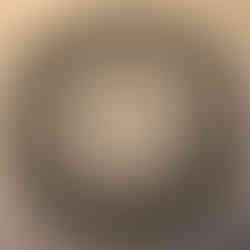New series update
- Carol Anne Jones

- Jun 16, 2020
- 2 min read
Updated: Aug 24, 2020
Looking on the positive side, the Covid 19 lockdown has given artists the time to focus on studio work. I’ve been putting together my next series, so let me tell you a little about it.
Late last year I took a trip to the Capital Museum in Beijing where currently I spend around half the year. The Capital Museum is an art museum which opened in 1981 and houses a large collection of; ancient porcelain, bronze, calligraphy, painting, jade, sculpture and Buddhist statues from Imperial China.
The various floors display the historical development of Beijing up to when it became the political centre of North China to a united multi-ethnic feudal state, and to the capital of the People’s Republic of China, hence its name.
I was particularly interested in the Porcelain collection housed there. Being a complete novice it was fascinating to take a first step into comprending the history of the dynasties. Chinese dynasties comprise most of China’s history due to their long time span of about 4000 years. It’s impossible to understand them all in such a short time so the best I could humbly understand is comprised in this brief summary:
Xia Dynasty (2100 B.C. – 1766 B.C.)
Shang Dynasty (1766 B.C. – 1047 B.C.)
Zhou Dynasty (1047 B.C. – 256 B.C.)
Qin Dynasty (221 B.C. – 206 B.C.)
Han Dynasty (206 B.C. – 220 A.D.)
Jin Dynasty (265 – 420)
Sixteen Kingdoms or Dynasties (304 – 409)
Southern and Northern Dynasties (420 – 589)
Sui Dynasty (581 -618)
Five Dynasties and Ten Kingdoms (907 – 960)
Liao Dynasty (916 – 1125)
Song Dynasty (960 – 1279)
Yuan Dynasty (1279 – 1368)
Ming Dynasty (1368 – 1644)
Qing Dynasty (1644 – 1911) – the last Chinese dynasty.
From the middle of the 19th century everything went downhill. China had to cede Korea and Taiwan to Japan in the China-Japanese War, while ceding parts of Manchuria to Imperial Russia and its ports in the China Sea to other powers such as Germany, and France. The discontent of the Chinese population was growing more and more due to their hatred towards the Manchu rulers, the Westerners, and the scarcity of reforms. All this, together with anti-western rebellions such as the boxers, led the last dynasty of China to disappear in 1911 after the Xinhai Revolution. Later the last Qing Emperor in exile, Pu Yi, would end up being a puppet of the Japanese in Manchukuo State during World War II. The era of Chinese imperial dynasties had come to an end.
My focus was on the Han dynasty. During this time Confucianism was promoted, paper was invented, and the Silk Road was opened added to which an attempt was made to send a Chinese expedition to the Roman Empire, commanded by General Ban Chao. This ended without success. Such is fate. However it's considered that the Han Dynasty presided over a golden age of Chinese culture, which embraced visual art as well as poetry, literature and music, in terms of both fine art and decorative art
I’ve examined a few designs of the ceramic plates from that time and my series views my personal space as foreigner in current times in this curious place called "China". I'm still finishing the other works, more studio time to come as I work towards my finished series.



























Comments